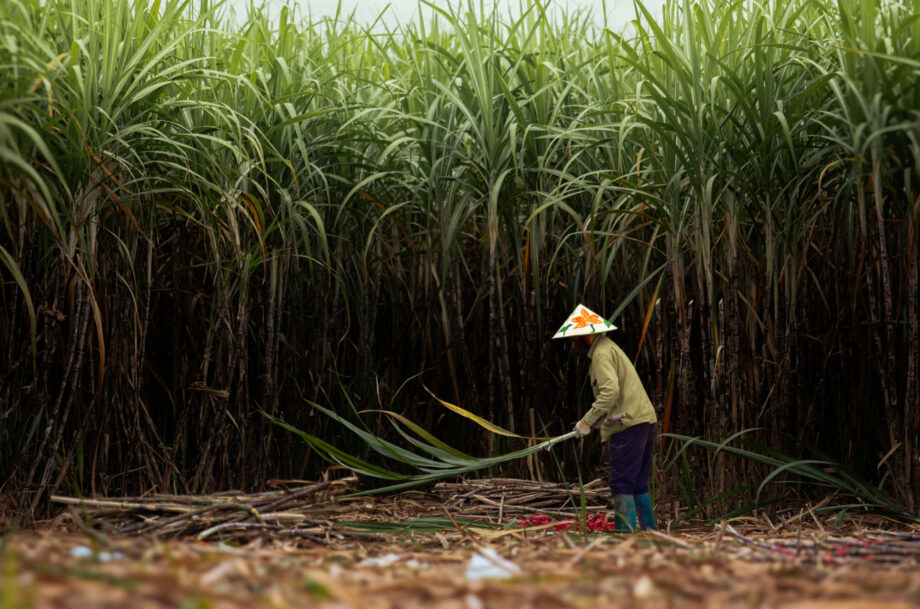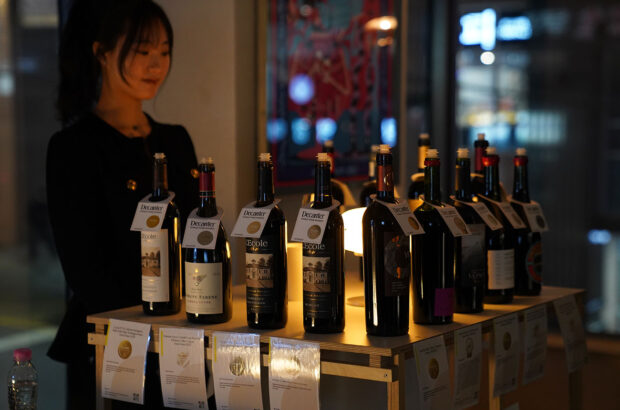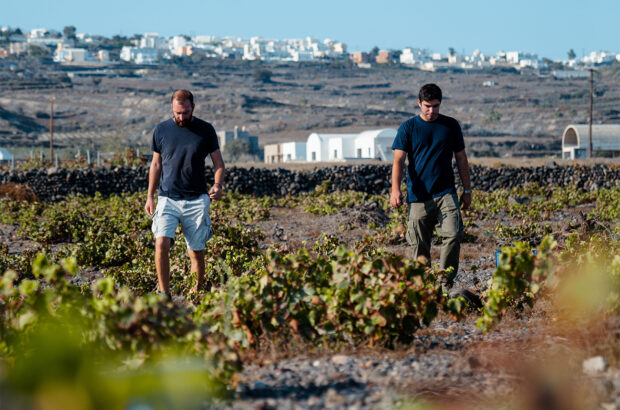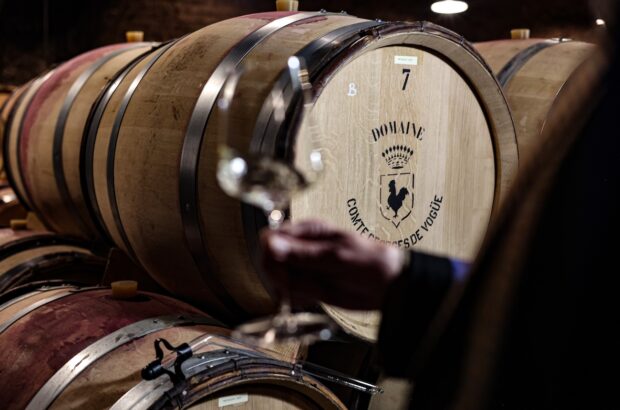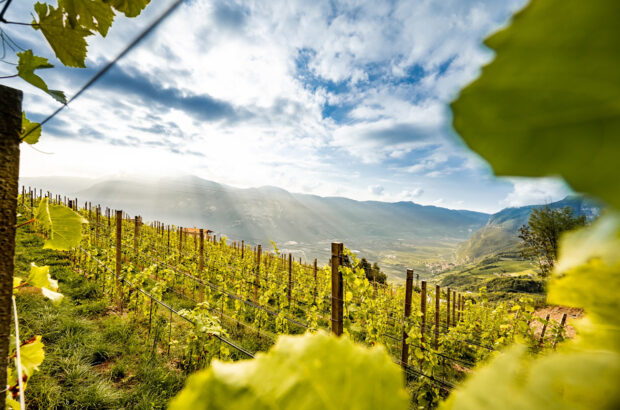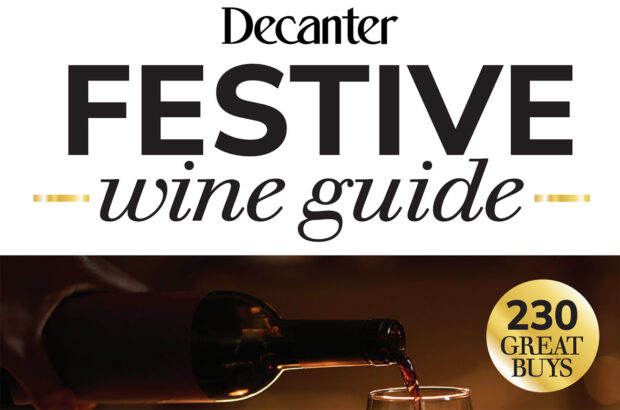A humble tot of rum might appear to be simply the highly agreeable result of the fermentation and distillation of sugarcane molasses or juice. But this spirit has a complex back story and over the centuries it has been at the centre of much explosive history, from financing the slave trade to inciting revolution.
Today rum is driving as much innovation across the globe as any other spirits category. It is being embraced from continent to continent, as many new distilleries and brands highlight the importance of terroir – with the knowledge of where the sugarcane is grown as important as where and how you distil.
Welcome to the new world of rum.
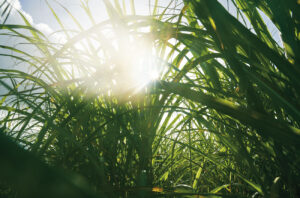
Sugarcane at the Mount Gay Estate on Barbados
Caribbean rum: British style
This most traditional style emerged from two of the former British colonial islands of the West Indies: Jamaica and Barbados. The latter is seen as the birthplace of rum and is home to Mount Gay, the world’s oldest rum distillery, founded in 1703.
Bajan rums are generally balanced and elegant. They sit in a sweet spot between Spanish-style rums (see below) and the big, funky, spicy flavours of Jamaican rums.
A centuries-old tradition of distilling in big open vats helps to create that generous Jamaican style – the most famous example of which is Appleton Estate. However, the most popular local styles on the island are overproof rums, which can weigh in at up to 63% abv. They include the world’s biggest-selling overproof rum, J Wray & Nephew.
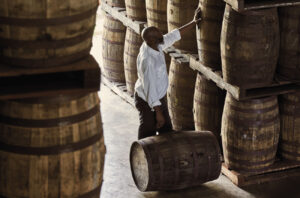
Checking rum barrels at Mount Gay Distillery
Caribbean rum: French style / rhum agricole
Rhum agricole means, rather uninspiringly, ‘agricultural rum’ in French. But thanks to a strict AOC designation, rhum agricoles from the French island of Martinique are an exciting expression of Martinique’s land, cane and culture.
Made from sugarcane juice (rather than molasses) these rhums are characterised by their grassy notes and are great in cocktails. The traditional rhum blanc is unaged; however, Martinique’s distillers also produce wonderful Cognac-inspired VSOP-style rums, aged in oak for more complexity.
You’ll also find this French-Caribbean style in Guadeloupe. Any sugarcane going into a Rhum de Guadeloupe must have been grown and processed on the archipelago and the product must similarly be distilled, aged and bottled on the islands.
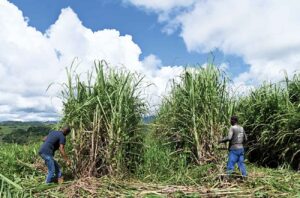
Cutting sugarcane on the Baie des Trésors estate in Martinique.
Caribbean Rum: Spanish style
Found in Cuba, Puerto Rico and across South America, Spanish-style rums tend to be lighter and sweeter, often due to being made from molasses and then aged in ex-bourbon barrels – sometimes with a finish in Sherry or Port casks.
Cuba and Puerto Rico are among the rock stars of the rum world. The birthplace of several iconic rum cocktails – the Mojito and Cuba Libre from Cuba and Puerto Rico’s Piña Colada – today they are also home to two of the two biggest rum brands in the world: Havana Club in Cuba and Bacardí in Puerto Rico.
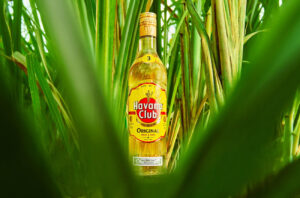
Havana Club rums are distilled in Cuba
South America
South America has a rum culture that is both artisanal and steeped in history, with different countries producing distinctive regional expressions.
While there is now only one distillery in Guyana – the Diamond Distillery – it makes Demerara rums, which have their own GI. Its most famous brand is El Dorado: seek out El Dorado Special Reserve 15-Year-Old for a typical taste of Demerara rum.
Venezuela is the home of Diplomático, which has ‘a unique mixture of Spanish, French and British influence in its history, means of production and terroir,’ as brand ambassador Georgie Billing explains.
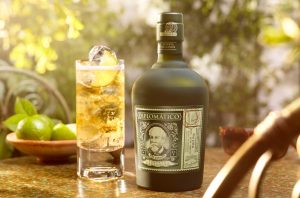
Venzuela’s Diplomático rum
Central & North America
While US drinkers tend to prefer rums from Puerto Rico and Cuba, smaller, boutique distilleries are gaining fans and sales across the country. They include Bayou from Louisiana and Montanya from Colorado. Their rums are finding an audience with the cocktail crowd across big cities, along with the likes of Owney’s Distillery in Brooklyn, NYC.
Similarly, Mexican rum is growing slowly, but there are sparks of regional interest, especially in the state of Oaxaca, the heartland of mezcal. It houses the Tosba and Paranubes Distilleries, both pressing local sugarcane to produce rums of great complexity.
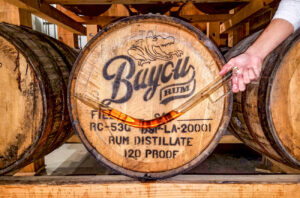
Barrel sampling at Louisiana’s Bayou Distillery Credit: Yvette Cardozo/Alamy
Europe
The UK has strong cultural identification with rum due to its colonial past, but can claim little by way of terroir for its rums, as no sugarcane is grown here. Instead British rums are made from imported sugarcane juice and molasses.
In recent years innovative British craft rum distilleries have emerged, from the likes of Dropworks in Nottingham to Ninefold in Scotland. Producers are using the country’s long heritage in brewing and distilling to make high-quality small batch rums.
‘We’re now looking at British rum in the same way the whisky category looks at Japanese whisky. It has that same stamp of small-batch quality,’ says Chris Bryant-Mansell, sales director at Dropworks.
On the Portuguese island of Madeira meanwhile, producers use local sugarcane juice. Their distinctive rums have to be aged for at least three years in oak.
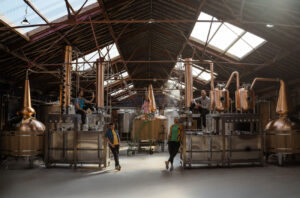
The team at Dropworks Distillery in Nottingham, UK
Asia
Arguably the best-known Asian rum is Don Papa from the Philippines. However, wider regional interest in rum is starting to grow; from Chalong Bay Distillery in Thailand to the Kikusui Distillery in Japan.
In Vietnam, terroir is of crucial importance for newcomer HaLong Rum. ‘It is about both nature and culture,’ says Raphael Grisoni, the distillery’s business development director.
‘We’re using local sugarcane for all our rums and local botanicals in our Spiced Rum. And we are even looking at the notion of terroir by using local wood to age our spirit. The idea is to show that we can have something totally Vietnamese.’
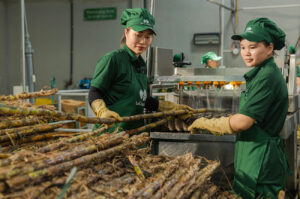
Workers process sugarcane at HaLong Distillery in Vietnam
Africa
The African continent is a melting pot for the rum industry, with many countries now using indigenous supplies of sugarcane and botanicals to distil increasingly great quality rums.
Distilleries founded over the last 25 years include Reign in Ghana, La Rhumerie de Chamarel in Mauritius and the Trois Fréres Distillery in the Seychelles, which produces Takamaka rums. African terroir shines in their rums; for example Reign ages its rum in barrels made of local wood that were previously used to mature brandy made from locally grown cashew apples.
South Africa has a strong rum market, with Mhoba Distillery producing authentic artisanal, farm-to-bottle rums – often aged in local red wine casks, imparting a dried fruit character.
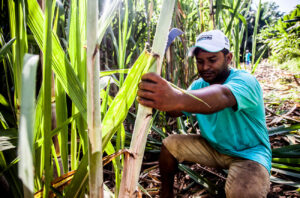
Harvesting sugarcane for Trois Fréres Distillery in the Seychelles Islands
Australia
Australia’s rum story began with Beenleigh – the country’s oldest operating distillery – founded in Queensland in 1884. Try Beenleigh Artisan Distillers Double Cask, aged for five years in native kauri pine vats. Also from Queensland, Bundaberg – known as Bundy – was first produced in 1889.
But the modern Australian rum scene is evolving. Husk Farm Distillery in Tumblegum, New South Wales, founded in 2012, has trademarked a new term – Australian Cultivated Rum (ACR) – inspired by the drive to express terroir. An ACR must be made from sugarcane varieties grown in a recognised region between Grafton, NSW and Mossman Queensland.
The ambitions and creativity of these local distillers around the world are helping to expand the notion of terroir in rum. As their spirits gain a wider global audience, we might see a new, peaceful rum revolution.
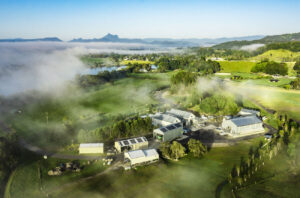
Husk Farm Distillery in Tumblegum, New South Wales
Global rums: 10 to try
Recommended by Decanter Spirits Editor, Julie Sheppard
Bayou Spiced Rum
US
Infused with a mix of Creole baking spices for up to 30 days, Bayou Distillery’s spiced expression offers a taste of its Louisiana homeland. Made from locally grown sugarcane – which has been cultivated in Louisiana since the 1700s – and matured in ex-bourbon and Sherry casks, it’s rich and velvety, with butterscotch maple sweetness. There’s plenty of banana and fig fruit notes to round out the spices – think cinnamon, clove and allspice. It makes a great mixer for cola or ginger ale; or sip it neat over ice. Alcohol 40%
Diplomático Planas
Venezuela
Aged for six years in barrels and charcoal-filtered for clarity, this delicious Venezuelan rum delivers the best of both worlds. It offers the rich depth of a dark rum – think toffee, warm spice and creamy vanilla – balanced with the brightness of a white rum, including fresh grassy tones. Layers of coconut, zesty lemon, green chilli and vibrant tropical and stone fruits add further interest. Silky and smooth, it’s perfect over ice or as a refined twist in a classic Daiquiri. Alc 47%
DropWorks Funk Drop Rum
UK
Founded in 2023 by rum expert Lewis Hayes, DropWorks in Nottingham is one of the UK’s newest rum producers, flying a flag for British rums. Made from imported molasses, Funk Drop is triple-distilled in England’s first double retort still. Production techniques used by Jamaican distillers to create their distinctive high-ester rums give a full-on, funky spirit with explosive tropical notes of roasted pineapple, ripe guava and coconut, plus earthier spice tones and an oily, mouthcoating texture. Try it in a Hurricane. Alc 63%
El Dorado 3 Year Old
Guyana
El Dorado is a range of demerara rums made in Guyana. The Diamond Distillery is located on the banks of the Demerara River, just six degrees away from the equator in South America. This is the youngest rum in the range, which is better known for its aged expressions, including 5-, 8-, 12-, 15- and 21-year-old rums. It spends three years in cask and is charcoal-filtered. This has an appealing nutty-toffee-brown sugar character alongside coconut, light spice and grassy notes. Alc 40%
HaLong White
Vietnam
Swiss Master Distiller Arno Bolliger produces a trio of distinctive rums from the HaLong Distillery, founded in 2021 by Giang Nguyễn. Local sugarcane is grown in Thạch Thành in Northern Vietnam and rums are rested in traditional Vietnamese ceramic pots to smooth out the palate. This creamy White expression has grassy aromas with notes of vanilla and ripe banana. Expect tropical fruit on the spicy palate – especially pineapple and banana – with an exotic note of lemongrass too. Makes a distinctive Daiquiri. Alc 40%
Havana Club Original Añejo 3 Años
Cuba
The leading Cuban rum brand, Havana Club’s light rum is aged in ex-bourbon casks for three years and then filtered to remove the colour. Sweet and fresh aromas, with tropical fruit notes – lots of pineapple, mango, banana and some fudge. The palate is grassy and spicy, with a refreshing fruitiness and honeyed sweetness. Pineapple, green apple, plus vanilla and lemon bonbons. A touch of the florality on the finish, plus lots of green chilli spice and some toffee. Great for the classic Cuban cocktail, a Mojito. Alc 40%
Husk Pure Cane
Australia
This award-winning rhum agricole from Australia showcases Husk Distillery’s focus on provenance. The label tells you exactly which variety of sugarcane was used and the year of harvest, giving a very specific taste of the north coast of New South Wales. As you’d expect from a sugarcane juice agricole, it’s characteristically grassy, with banana notes, citrus hints, white pepper spice and a slightly earthy base note. Enjoy it long with ginger beer and a squeeze of lime. Alc 40%
Mount Gay Black Barrel Double Cask Blend
Barbados
From the world’s oldest rum distillery, Mount Gay Black Barrel Double Cask is a blend of three- to seven-year-old rums, finished in heavily-charred ex-bourbon barrels for six months. The result is a complex and toasty expression of Bajan rum, that kicks of with aromas of spicy oak, toffee, ginger biscuits, orange and roasted pineapple. There’s a lingering smokiness to the smooth palate, which is loaded with notes of caramel, vanilla, ginger, tropical fruit and rich dried fruit. One to sip and savour – great for a Rum Old Fashioned. Alc 43%
Rhum JM White
Martinique
Rhum agricole is a distinctive style of rum invented in Martinique, that’s typical to the French-speaking islands of the Caribbean. Founded in 1845, the JM Distillery sits at the base of Mount Pelee, an active volcano on the northernmost tip of the Martinique. Agricoles have a trademark grassy character, which you’ll find here alongside bright lime citrus, floral and tropical notes, plus white pepper spice. I love this in a Mojito. Alc 50%
Takamaka Pti Lakaz
Seychelles
Made on the island of Mahé, Pti Lakaz is a blend of two Seychelles rums – a pot-distilled cane rum matured in three types of oak and a molasses rum rested in ex-bourbon casks – with an eight-year-old molasses rum from Foursquare Distillery in Barbados. Aromas of spice, toffee and tropical fruit led to a rich and rounded palate, with mellow brown spices, malted milk biscuits, Madeira cake, bananas, caramel and ripe tropical fruit. With its long, spicy finish, it’s perfect for a fruity rum punch. Alc 45.1%

